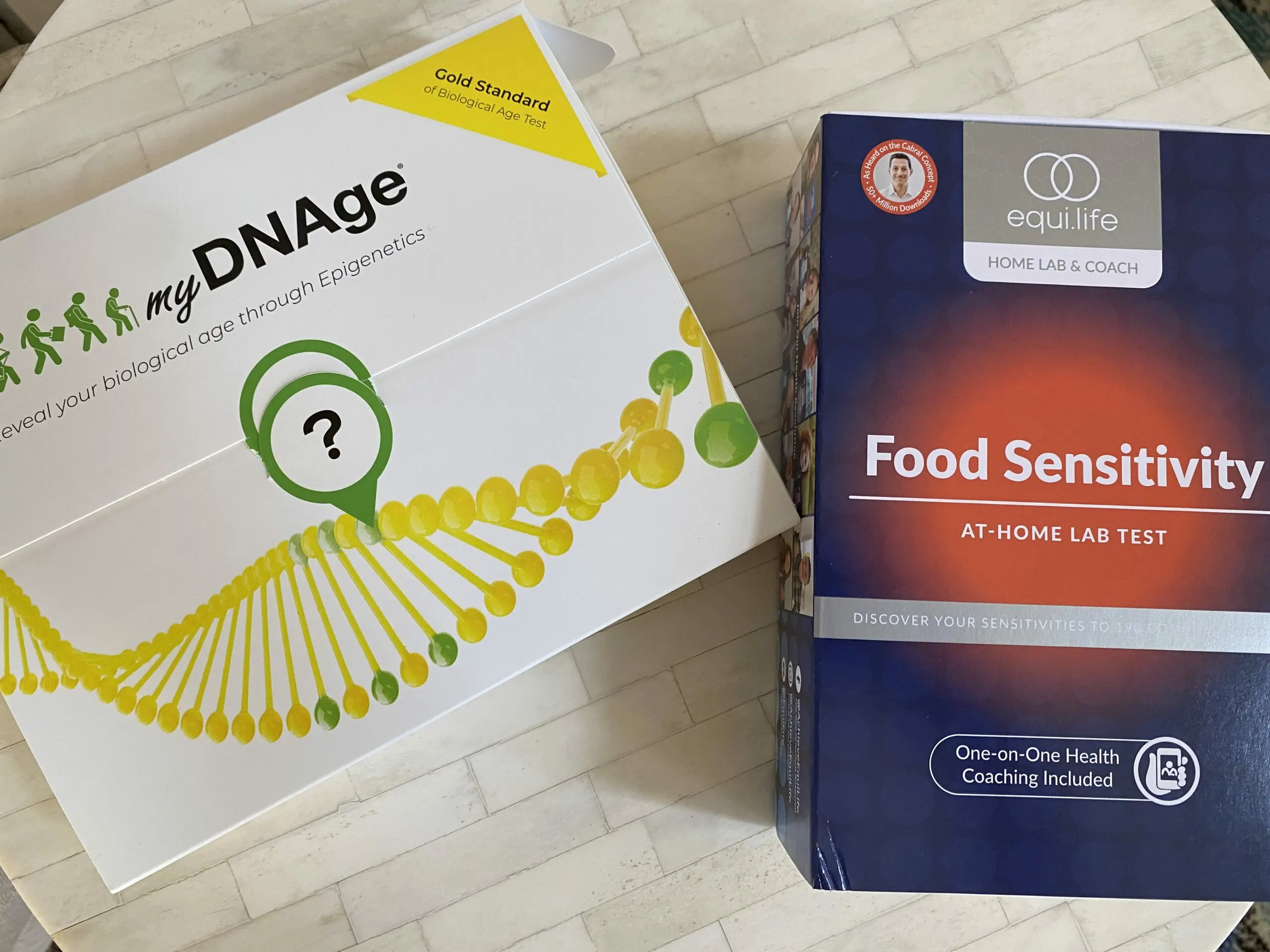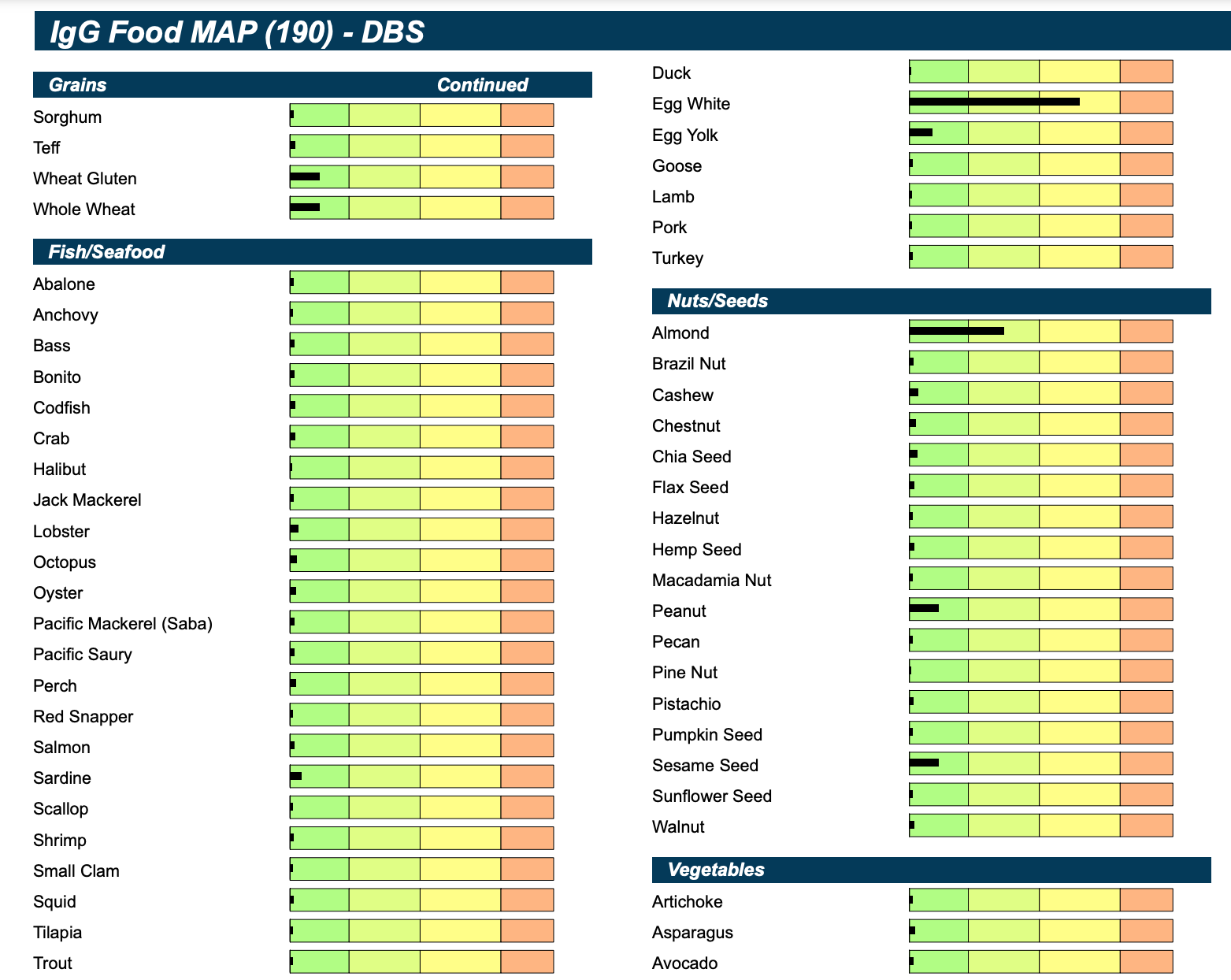
Sharing the results of my IgG food sensitivity testas well as the pros and cons of this testing method.
Hello friends! How is the day going so far? I hope you’re having a great time! Today I’m working on podcast material (new episode tomorrow) and I’m meeting a friend for lunch.
For today’s post, I wanted to share a little more about my personal journey to health and one of the steps in the process: food sensitivity testing. When I first signed up for the IHP program (you can check out my review of Level 1 here and Level 2 here), I knew I would love to be able to help friends and clients in a completely different, more personalized way. I had no idea how much this information would help me on a personal level as well.
Through my knowledge in IHP and my testing capabilities, I have been able to uncover some root causes and am working to rebalance my body by removing toxicities and restoring deficiencies.
Home IgG Food Sensitivity Test Review (and My Results)
The short version:
– Last spring, I had horrible conjunctivitis that became a trigger for constant eye problems: watery, very red, itchy, runny eyes. I couldn’t wear contact lenses for almost three months. I have tried practically the entire pharmacy ophthalmological section :/
– I saw many ophthalmologists who couldn’t help me (they just wanted to throw the kitchen sink at me with eye drops and prescriptions, and nothing helped) – I finally found a dry eye specialist who was able to give me a plan of action and my eyes improved tremendously
– I did a blood test with my PCP to check core markers and inflammation, and two lupus markers came back positive, which explains the joint pain I had in my hands and the strange rashes I’ve had over the years. the years. Whenever I have been under periods of extreme or prolonged stress, I would break out in a rash and often get sore hands at night, which I attributed to writing so much.

– I instantly went into test and learn mode, doing a HTMA test, Candida metabolic and vitamin testing, and Food sensitivity test. (If you’re curious about testing, email me; I can get better prices than those available on the website.) The eye problems (which I think are partly an allergic response) + autoimmune symptoms told me that something was probably going on in my gut, so I was curious to see if I had any yeast, bacteria, and Candida overgrowth (I had all three ) and how my body responded to stress. He was nutrient deficient in several markers and also had some elevated levels of heavy metals.

– I worked for months to lower the inflammation in my body and in December the lupus markers were negative!!! YAYAAAA! While I was never officially diagnosed with lupus (I was waiting to see Rheumatology until I could get some answers and get tested again and since my symptoms were under control), this just tells me that the inflammation has definitely gone down, so there are good things to be said. everywhere.
– I made big changes to my lifestyle and diet, and my food sensitivity test was to see if I was eating anything that might be causing excess inflammation. In today’s post, I will share the process, results, and valuable information I gained from this at-home test.
*A friendly reminder that I am NOT a doctor and these tests do not diagnose, treat, prevent or cure diseases. Its goal is to provide information about your unique body so you can work with a professional to create a personalized plan of action.*
Results of my IgG food sensitivity test
What is an IgG reaction?
IgG, or immunoglobulin G, is an antibody present in our immune system. IgG reactions occur when the body identifies specific foods as threats, triggering an immune response that can cause a variety of symptoms. These reactions are different They come from immediate allergic-type responses (such as hives, anaphylaxis, severe itching, etc.) and are often associated with delayed symptoms, making them difficult to identify without specialized testing.

The Home IgG Food Sensitivity Test:
The IgG food sensitivity test is a convenient at-home testing method designed to identify potential food sensitivities. The process usually involves a simple blood sample, which can be collected using a finger prick kit provided by the testing service. I will share screenshots of my test results to provide a transparent view of this experience.
Benefits of IgG Food Sensitivity Test:
Personalized information:
The test offers personalized information about your body’s specific reactions to a wide range of foods. This information allows you to make informed dietary decisions tailored to your unique needs. This particular test is for 190 of the most common foods and spices!
Identification of hidden triggers:
Unlike immediate allergic reactions, IgG reactions are often delayed, making it difficult to identify trigger foods. The test helps uncover possible hidden culprits that contribute to various health problems.
Symptom management:
Understanding and addressing food sensitivities can help manage a variety of symptoms, including bloating, fatigue, skin problems, brain fog, anxiety, and digestive upset.
Nutrition Optimization:
Armed with knowledge about your body’s reactions, you can optimize your nutrition by selecting foods that support your overall well-being and minimize the risk of triggering inflammatory responses.
Targeted elimination diets:
Test results can guide the implementation of specific elimination diets. By temporarily eliminating identified trigger foods, you can assess the impact on your symptoms and gradually reintroduce foods based on your body’s responses. Depending on the severity, you will remove the foods for 6 weeks, 12 weeks, or 6 months and then gradually add them back to see how your body responds.

Disadvantages of at-home food sensitivity testing:
While food sensitivity testing has gained popularity as a potential tool for understanding individual reactions to certain foods, it is essential to recognize some of the criticisms and concerns surrounding these tests. Critics argue that the scientific validity and reliability of many commercial food sensitivity tests are debatable. The main criticism arises from the diversity of immune responses and the complexity of the human body’s reaction to different foods.
Furthermore, the concept of IgG reactions as indicators of food sensitivity is not universally accepted within the medical and scientific communities. Some argue that elevated IgG levels may not necessarily correlate with adverse reactions and may vary between individuals without apparent symptoms.. Additionally, the dynamic nature of the immune system makes it difficult to establish definitive cause-and-effect relationships between specific foods and health problems. It is crucial that people considering food sensitivity testing approach them with a critical mindset, recognizing their limitations and consulting healthcare professionals for a comprehensive assessment of their health concerns.
My experience:
In this post, I will guide you through my personal experience with the IgG food sensitivity test, sharing the foods that triggered reactions, my initial reactions, and how I adjusted my diet based on the results. I thought it would be helpful to my friends who are considering this or who are on a similar journey.
For this test, you want to have a combination of foods in your system, especially foods that you think may be problematic (but that you ARE NOT allergic to. If you know you are allergic to nuts, stay away from nuts). Dr. Cabral recommends an egg and cheese sandwich a few days before the test. He wanted this test to be representative of how I eat, which for now excludes gluten and dairy. I eliminated them after falling down the lupus rabbit hole, as some books recommended skipping gluten and dairy if you have autoimmune symptoms. I noticed a huge improvement in my joint and eye pain.
I had a few bites of birthday cake a few days before the test and the gluten was elevated, proving that it is not the best option for me at this time.

My numbers were also slightly elevated for almonds, egg whites, and yogurt, which was surprising to me.

I have been disheartened to learn through this experience that I cannot have eggs all the time like I used to until my gut heals. Now I only eat them once a week and enjoy every bite! Once my gut has healed, the idea is that I’ll be able to add back dairy, gluten, and, most frequently, eggs, and check for reactions along the way.
The test also includes examples of meal rotations to help include a variety of foods and potentially reduce negative reactions and responses to various foods.

This whole process has been very enlightening and informative, and I’m excited to share more along the way.
If you are interested in functional testing, email me at gina@fitnessista.com with the subject TESTING and I would love to help you!
xo
gina
Further:
The best functional laboratories for women over 35 years of age.







